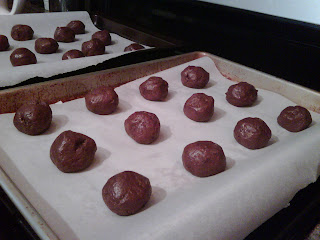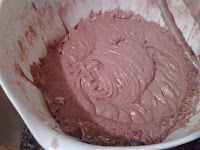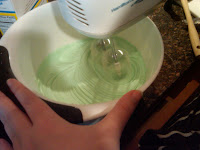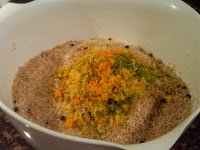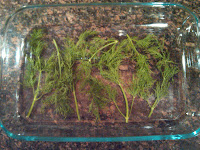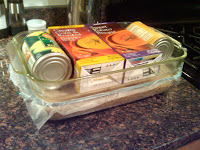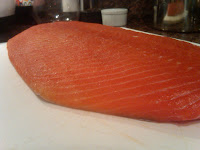I based this recipe on the Chilled Garden Pea Soup recipe in the Eleven Madison Park Cookbook by Daniel Humm and Will Guidara. Like almost all of the recipes in Eleven Madison Park, I had to simplify this one considerably before I could attempt to make it. By omitting the "buttermilk snow" and by substituting a piece of crispy prosciutto for the more-involved "prosciutto crisp," I was able to bring this recipe down to earth while staying true to the vibrant flavors in the dish. The sweet-fresh flavor of spring peas is complemented by the tartness of buttermilk and the sting of green onion. Crispy prosciutto, served on the side, adds salt and a little whimsy to the dish.
The most involved part of this recipe is shelling the peas. Two cups doesn't sound like a lot, but after you've been shelling peas for 30 minutes and your measuring cup still looks empty, you'll realize that it's actually a lot. That being said, the fresh peas are what make this dish special, so don't even think about cheating and using frozen peas. If you're lucky enough to find freshly-shelled peas, available at some farmers markets, they're a great alternative.
This recipe makes enough to serve 6 as a small first course or amuse bouche. If you want to serve it as a middle course, simply double the amounts in the recipe. The soup is best if made the day before serving, allowing the flavors to intensify overnight. The crispy prosciutto can be prepared several hours ahead of time, but are best if eaten the day they are prepared.
Chilled English Pea Soup with Crispy Proscuitto
Kosher salt
1/3 cup chopped green onions, green parts only
2 cups shelled English peas
1/2 cup buttermilk
2 tablespoons good olive oil
6 mint leaves
6 thin slices prosciutto
Freshly ground black pepper
Tabasco sauce
Instructions
2. Using a slotted spoon, transfer them to the ice water. Once cool, drain them on paper towels.
3. Add the peas to the boiling water and cook for 3 to 4 minutes.
4. Using a slotted spoon, transfer them to the ice water and drain with the green onions once cool.
 5. Place the green onions and peas in a blender along with the buttermilk, olive oil, mint leaves, 1 tablespoon salt and 6 cups of water.
5. Place the green onions and peas in a blender along with the buttermilk, olive oil, mint leaves, 1 tablespoon salt and 6 cups of water. 6. Blend on high speed until completely smooth, 4 or 5 minutes.
 7. Pass soup through a fine mesh strainer, pressing against the sides gently with the back of a wooden spoon to strain. Clean the strainer, and then strain again into a clean bowl. If the soup isn't completely smooth and free of all solid particles, strain again for a third time.
7. Pass soup through a fine mesh strainer, pressing against the sides gently with the back of a wooden spoon to strain. Clean the strainer, and then strain again into a clean bowl. If the soup isn't completely smooth and free of all solid particles, strain again for a third time.8. Chill the soup over ice, stirring occasionally.
9. Cover and refrigerate overnight.
Crispy Proscuitto
10. The next day, preheat the oven to 375 degrees. Line a rimmed baking sheet with Silpat. Carefully lay the slices of prosciutto on top and bake for 10 to 15 minutes, or until crisp and slightly dark.
11. Remove using tongs and drain on paper towels. Store the prosciutto in an airtight container until ready to serve.
12. Remove the soup from the refrigerator and season to taste with additional Kosher salt, black pepper and Tabasco.
11. Remove using tongs and drain on paper towels. Store the prosciutto in an airtight container until ready to serve.
12. Remove the soup from the refrigerator and season to taste with additional Kosher salt, black pepper and Tabasco.
13. To serve, fill 6 chilled demitasse or other small cups (such as a tall shot glass or espresso cup) with equal portions of the soup. Place a piece of prosciutto to the side of each cup and serve immediately.


















